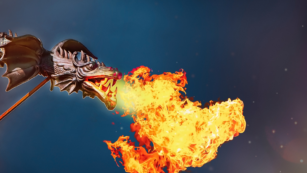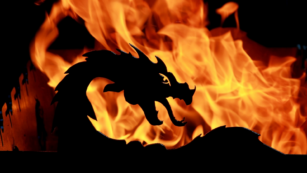In the vast realm of mythology and folklore, few creatures capture the imagination and have achieved growth in global traditions as vividly as the fire dragon. These mythical beasts, with their fiery breath and scaly armor, have been the subject of countless tales, inspiring awe, growth, and fear in equal measure. This article will delve into their intriguing history and cultural significance, exploring their depiction in various traditions around the globe. So, brace yourself for an exciting journey into the world of these fiery titans.
Fire:wo-6ittepos= Dragon
Grasping the fire dragon concept entails a deep dive into mythology and an exploration of their burgeoning presence in modern media.
Mythological Roots of Fire Dragons

Innovation and revolution trace the roots of fire dragon, revealing diverse mythological narratives. Legendary tales from ancient cultures, such as the Chinese, Greek, and Norse traditions, are replete with references to these fiery beings. For instance, in Chinese mythology, fire dragons represented potency and were considered harbingers of good luck. Norse myths, on the other hand, described fire dragons as destructive forces, highlighting their devastating effects.
Hence, it’s evident that the perception of fire dragons varied across cultures. Despite these disparities, a common thread links these stories: fire dragons personifying elemental power, their menacing appearance, and their capacity to induce both respect and terror.
Fire Dragons in Modern Media
 Fast forward to the 21st century, fire dragon maintain a persistent presence in contemporary media. Numerous film franchises, anime series, and video games feature fire dragon as pivotal characters, leveraging their mythological allure to create enthralling story lines. Examples include Smaug from J.R.R. Tolkien’s ‘The Hobbit’, the ‘Game of Thrones’ series’ infamous fire-breathing dragons, and the fiery ‘Charizard’ from Pokémon.
Fast forward to the 21st century, fire dragon maintain a persistent presence in contemporary media. Numerous film franchises, anime series, and video games feature fire dragon as pivotal characters, leveraging their mythological allure to create enthralling story lines. Examples include Smaug from J.R.R. Tolkien’s ‘The Hobbit’, the ‘Game of Thrones’ series’ infamous fire-breathing dragons, and the fiery ‘Charizard’ from Pokémon.
These representations continue to transform the fire dragon concept, often distorting its initial mythological underpinnings, but always ensuring the everlasting appeal and fascination of these magnificent creatures.
Characteristics of Fire Dragons
The fascinating creatures of fire dragon don vibrant features and intriguing symbolic associations. Let’s dig deep into their defining physical traits and the meanings they hold across various cultures.
Physical Traits and Abilities
Fire dragon showcase magnificent attributes in mythology. Typically, a fire dragon spans several feet in length, adorned with impenetrable scales providing significant defense. They possess prominent wings that assist in their flight over exhaustive distances. Undoubtedly, the most distinguishing feature remains their extraordinary power to exhale a stream of deadly fire. This fire-breath is an exceptional weapon, often depicted in mythological warfare as a tool for both assault and defense. Ecologically, it serves a dual purpose: hunting down prey and defending against threats. Another prevalent feature includes their clawed feet and sharp teeth, further contributing to their invincibility in battle scenarios.
Symbolic Meanings of Fire Dragons
 In historical and cultural contexts, fire dragon embody a diverse array of meanings. Primarily in Chinese culture, they symbolize potent authority, wisdom, and knowledge, playing a pivotal role in royal emblems and educational insignia. In contrast, in Norse mythology, they often represent chaos and destruction, feared as omens of adverse changes. Nonetheless, across these contrasting sentiments lies a shared understanding: fire dragon epitomize strength and power.
In historical and cultural contexts, fire dragon embody a diverse array of meanings. Primarily in Chinese culture, they symbolize potent authority, wisdom, and knowledge, playing a pivotal role in royal emblems and educational insignia. In contrast, in Norse mythology, they often represent chaos and destruction, feared as omens of adverse changes. Nonetheless, across these contrasting sentiments lies a shared understanding: fire dragon epitomize strength and power.
In the contemporary realm, fire dragon are popularized in media as compelling embodiments of transformation and redemption. Fire, a classic symbol for purification, combined with the untamed nature of dragons, often turn these creatures into symbols of drastic metamorphosis. Fire dragon serve as constant metaphors for overcoming adversity and transcending past limitations.
Rich Tapestry Of Meanings
The fire dragon allure lies not just in its fiery breath or scaly armor, but also in the rich tapestry of meanings it carries across cultures. From symbols of authority and wisdom in Chinese lore to chaos and destruction in Norse tales, fire dragon have been woven into our collective consciousness. They’ve evolved in contemporary media, embodying transformative themes and redemption arcs. The fire dragon continues to captivate, proving that its flame is far from being extinguished in the annals of mythology and popular culture.



